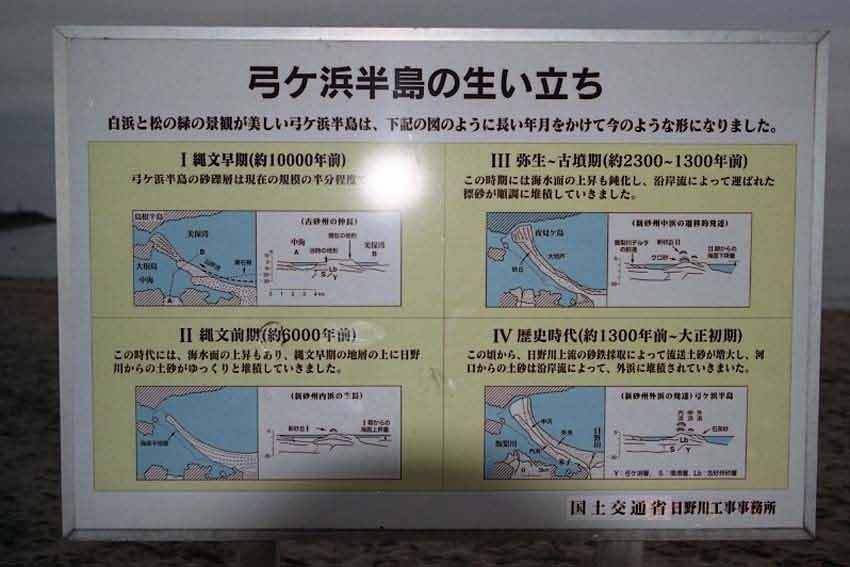 MINOLTA α-507si, AF28-105mm F3.5-4.5, FUJI SUPERIA400 |
鳥取県米子市夜見町付近 Yumi-cho, Yonago City, Tottori Pref. 日野川上流における中世後期以降の鑪(たたら)製鉄のための,風化花崗岩の切り崩し(砂鉄の採取)と木炭製造のための森林伐採による大量のマサ土の供給が,弓ヶ浜の砂州と白い砂浜を発達させた。鑪製鉄は1923年に終了し,マサ土の供給が止まったことで,砂州は浸食にさらされるようになったのである。 Traditional iron manufacture (tatara) developed in Upper basin of Hino River since the late Middle Ages. People quarried weathered granite to extract iron sand and deforested to make charcoal. So, a quantity of weatherd granite sand were producted and were carried to the sea. They formed Yumigahama sandbar and white coast greatly. Traditional iron manufacture disappered in 1923, so the supply of weatherd granite sand stopped and the erosion of the sandbar started. (I: 10000BP, II: 6000BP, III: 2300-1300BP, IV: 1300BP-Taisho period, about 1920s) <文献/Refernce> 小池一之 1997. 『自然環境とのつきあい方5 海岸とつきあう』岩波書店,131p. 国土交通省日野川工事事務所 海岸事業:http://www.cgr.mlit.go.jp/hinogawa/work/kaigan.htm |